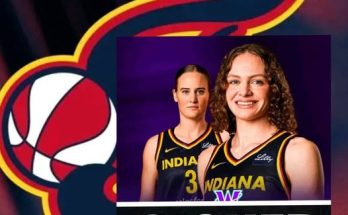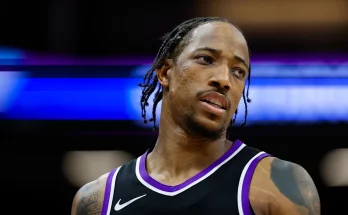Bleacher Report’s latest take on the Miami Heat is a refreshing break from the usual hot stove chatter, the kind that often revolves around big-name trades, splashy free-agent signings, and headline-grabbing moves that dominate the summer news cycle. Instead, the Heat are being commended for something far less flashy but perhaps far more valuable in the long term—smart, patient, calculated decision-making that puts them in a stronger position without compromising their future. In an NBA landscape where impulsive deals can derail a franchise for years, the Heat’s ability to “quietly crush” the offseason is not only impressive, it’s a reminder of how championship-caliber organizations often win their battles in the margins rather than at the front page of free agency.
For years, the Heat have been linked to nearly every available star. Damian Lillard last summer. Bradley Beal in years prior. Even more recently, speculation swirled around players like Donovan Mitchell, Trae Young, or other high-profile guards who could fill the perceived void in Miami’s backcourt. And yet, when the dust settled this summer, none of those deals materialized. On the surface, for fans craving instant gratification, that might feel like a letdown. But as Bleacher Report points out, there’s an upside to not overreaching in the market: you avoid locking yourself into a bad contract, depleting your draft capital, or being stuck with a player who doesn’t fully fit your system just because they have a recognizable name.
The glaring hole at point guard remains the elephant in the room. Kyle Lowry’s departure left a leadership and playmaking gap, and while the Heat do have capable ball-handlers in Tyler Herro and Jimmy Butler, neither is a pure floor general in the traditional sense. Miami could have easily overpaid for an average starting point guard or burned through assets for someone who isn’t a perfect fit just to check that box. Instead, they opted to lean into versatility, positional flexibility, and a collective approach to playmaking. That’s a strategic choice rooted in trust—trust in their system, trust in head coach Erik Spoelstra’s ability to maximize talent, and trust in the culture that has consistently kept them competitive regardless of roster changes.
When Bleacher Report described the Heat as “deeper, more dynamic, and more flexible” than they were a season ago, that was no throwaway compliment. Depth has been one of Miami’s calling cards in recent years, and their knack for unearthing hidden gems from the G League, undrafted free agency, or bargain-bin contracts is unmatched. Players like Caleb Martin, Max Strus, and Gabe Vincent—each of whom became integral playoff contributors—are products of a front office that knows how to find talent others overlook. This offseason, Miami retooled that same pipeline, ensuring that they have multiple options at every position without having to mortgage the future to get them.
One of the understated victories of this summer for the Heat is roster balance. They’ve managed to add players who can thrive in multiple roles while keeping the salary cap in check and maintaining draft flexibility. That means they’re positioned not just to compete now but also to pounce when the right star becomes available. In the modern NBA, where disgruntled All-Stars change teams with increasing frequency, flexibility is a weapon. Being overcommitted to the wrong core can leave a team helpless when the perfect player finally hits the trade market. Miami has sidestepped that trap masterfully.
The Heat’s approach also signals a strong internal belief in the roster they already have. Jimmy Butler remains the emotional and competitive heartbeat of the team, Bam Adebayo is in his prime and arguably still improving, and Tyler Herro—when healthy—offers the kind of scoring punch that can swing games. Add to that a collection of role players who understand their jobs and excel within the team’s identity, and you have a squad that doesn’t need to reinvent itself every summer to stay relevant. Sometimes the best move is not making a move, especially when continuity and chemistry are already in your favor.
It’s also worth noting that Miami’s track record in player development gives them the luxury to be patient. Spoelstra’s system doesn’t rely on one player to do all the heavy lifting; instead, it empowers every rotation piece to contribute meaningfully. This structure allows the Heat to take chances on versatile wings, athletic bigs, or combo guards who might not fit neatly into another team’s plans but can thrive in Miami. The result is a roster that can adapt to different playoff matchups without needing wholesale changes.
Another factor that underscores the “quietly crushing” label is how Miami handled their cap sheet. In an era where second-apron penalties in the new CBA can hamstring even the most talented teams, avoiding expensive long-term mistakes is crucial. The Heat resisted the urge to hand out bloated contracts just to fill gaps, and they maintained enough financial breathing room to remain active players in future trade deadlines and free agency periods. That’s the kind of foresight that keeps an organization competitive over decades, not just seasons.
Of course, none of this guarantees success. The Eastern Conference is as competitive as it’s been in years, with Boston and Milwaukee still looming as title favorites, and emerging threats like Cleveland, Philadelphia (depending on their offseason moves), and New York all improving. But the Heat have proven repeatedly that they can outperform expectations when the stakes are highest. As the eighth seed in 2023, they made an improbable run to the NBA Finals. As a lower seed again in 2024, they pushed higher-ranked teams to their limits. In both cases, depth, adaptability, and culture were at the core of their success—exactly the qualities they’ve doubled down on this offseason.
One of the more intriguing ripple effects of Miami’s patience is the message it sends to the locker room. By not panicking or chasing after mismatched stars, the front office is effectively telling its current players: “We believe in you.” That can be a powerful motivator, especially for a team built on grit and underdog mentality. Players who feel trusted are more likely to embrace their roles fully, buy into the system, and push themselves to exceed expectations.
Looking ahead, the Heat are in a position where they can let the season dictate their next move rather than entering the year feeling like they have to make one. If their point guard committee approach works, great—no need to spend assets. If it doesn’t, they still have the trade flexibility to make an in-season adjustment. Either way, they’ve preserved their ability to act rather than react, which is a rare advantage in today’s league.
It’s also hard to ignore the intangible benefits of stability. While other franchises scramble to integrate multiple new stars or overhaul entire systems, Miami’s continuity allows them to start the season ahead of the curve in terms of chemistry and execution. That edge can be critical in a tight playoff race where a few early wins or losses can determine seeding. And when the postseason arrives, a team that knows exactly who it is—and has built its identity over years rather than months—often has the upper hand in high-pressure situations.
Bleacher Report’s praise isn’t just about what Miami did this summer—it’s about the philosophy behind those moves. In an NBA that increasingly rewards the patient, disciplined franchises who can strike when the opportunity is right, the Heat have positioned themselves as one of the league’s smartest operators. They’ve built a roster that’s more dynamic without being reckless, deeper without being expensive, and more flexible without being desperate. In other words, they’ve put themselves in the rare sweet spot where they can contend now and still dream bigger later.
For fans, it might not have been the kind of offseason that sells jerseys or sets social media on fire. There was no headline-grabbing blockbuster, no parade of All-Stars at the introductory press conference. But championships aren’t won in July headlines—they’re won in May and June, and the moves that matter most are often the ones that don’t seem monumental at first glance. Miami’s front office understands that, and this summer, they played the long game to near perfection.
In the end, the Heat’s offseason might be best summed up as a quiet masterclass in restraint, resourcefulness, and readiness. They didn’t chase the wrong player. They didn’t panic in the face of a positional need. They didn’t compromise their future for short-term optics. Instead, they methodically improved their roster, enhanced their depth, and preserved the flexibility that could eventually land them the right superstar when the timing is perfect. And if history has taught us anything about the Miami Heat, it’s that when the timing is right, they don’t miss.
If this approach pays off the way Bleacher Report predicts, the rest of the NBA might look back on the summer of 2025 not as the offseason where Miami stood still, but as the one where they quietly built the foundation for their next great run. And in true Heat fashion, they won’t care if you noticed it now—they’ll make sure you notice it when it matters most.



